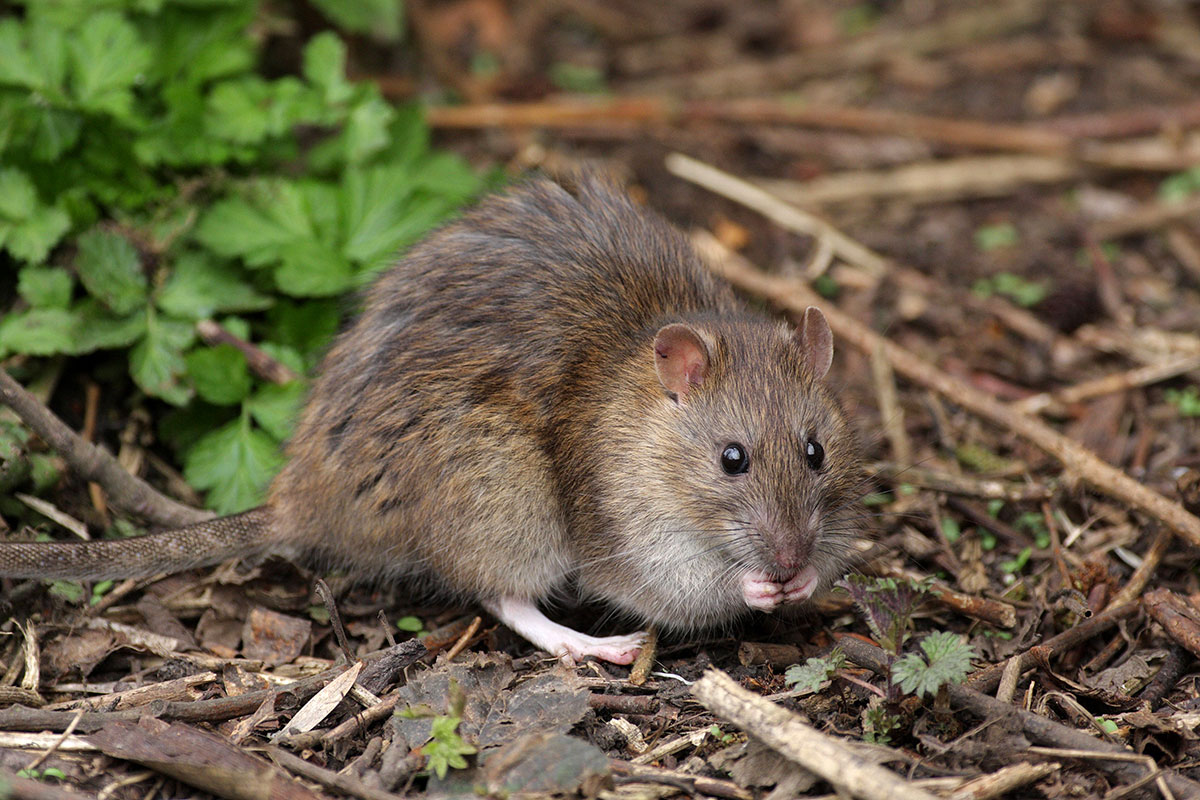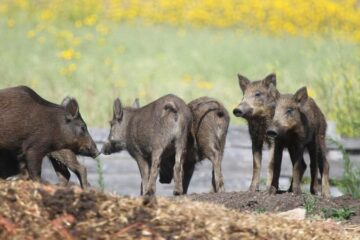Photo Caption: Norway rat eating some plant material. Photo credit: shutterstock
Two species of rats are problematic and invasive in BC: Norway and Black rats. The Columbia Shuswap Invasive Species Society (CSISS) is raising awareness of what can be done about these pesky rodents.
Norway and Black Rats
The Norway rat is native to China and Mongolia, and the Black rat is native to India. Rats are now found worldwide, and were introduced in Canada through European settler ships in the 1800s. Norway rats are much larger, about 21 centimetres long, with a short tail and small ears. These rats prefer semi–aquatic environments, and often can be found in sewer systems and ground level in buildings where they can build tunnel systems. Black rats, also known as roof rats, have smaller bodies, about 17.5 centimetres long, with a long tail and large ears. They are good climbers who can be found in ceilings. Both species are highly adaptable and opportunistic feeders.
Impacts of Rats
Rat populations can rapidly increase as they produce several litters year round, having up to 900 offspring in a single year. Norway and Black rats damage infrastructure, contaminate food sources, and predate on seabird populations. Rats can chew through insulation, walls, and wires, which can start electrical fires. They are known to transmit diseases, negatively impact crops, and eat chicken eggs and chicks.
What can be done?
Do not release or transport rats in BC, and prevent them from entering your home. Robyn Hooper, Executive Director of CSISS, states “we encourage residents to block off potential entry points and remove and securely store any food or garbage that might attract rats.” Entry points might be small cracks or holes, areas where there is a food or water source, or where vegetation touches the building. Guidance from a licensed professional on choosing a proper control method is best for finding a long term solution. When possible, choose an alternative method to poison, as it does not kill the rat immediately and can enter the food chain if it is captured by a predator before it dies. Due to this impact on other wildlife, the use of second-generation anticoagulant rodenticides has been limited to essential services only in BC.
You can learn more here: https://www2.gov.bc.ca/gov/content/environment/pesticides-pest-management/managing-pests/animals/rodents
and our dedicated rat webpage: https://columbiashuswapinvasives.org/invasive-species/aquatic-and-other-invasive-species/invasive-mammals-and-birds/norway-and-black-rats/



